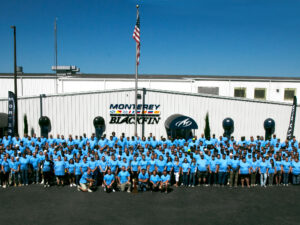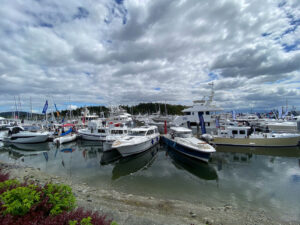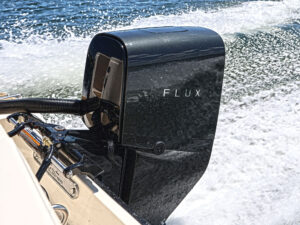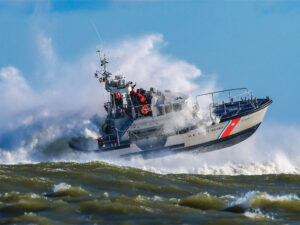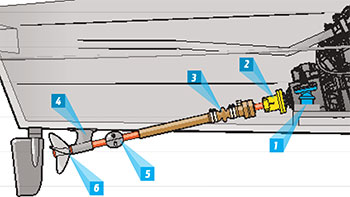
How do you recognize potential problems with an inboard drive train and its support systems? Since we’ve always rated Tiara Yachts (tiarayachts.com) installations top-notch, we sought out answers from Rick Eggerding, Tiara’s director of product development. Eggerding points to one big indicator: vibration while the boat’s underway. “A well-designed and properly installed system should run smoothly, without a hint of vibration,” Eggerding says. Whether you feel vibration or not, closely inspect these six key elements for proper design, installation and maintenance.
1. Engine Isolators
Make sure the engine mounts and isolators comply with the engine manufacturer’s specifications for loading. Each power system has a different spec, and lack of adherence can lead to issues such as vibration. Also, there should be at least three-quarters of an inch around the engine to prevent it from banging on the bottom as the engine flexes on its isolators, Eggerding says. Isolators can also degrade over time, so check them periodically.
2. Shaft and Coupler Alignment
Inboard prop shaft and coupler alignment proves critical in minimizing wear and eliminating vibration. “Proper tolerances here are in the range of one-2,000th of an inch,” says Eggerding. “Misalignment can create problems.” The best way to check this is to have a service center or surveyor break the coupler loose and check it with a feeler gauge, he says.
3. Shaft Seal
Today’s inboard boats should have a zero-maintenance shaft seal such as the PYI PSS (pyiinc.com) or the Tides Marine SureSeal (www.tidesmarine.com). These seals are also water-cooled and self-aligning. “Other systems that require maintenance can lead to seizing of the shaft and catastrophic failure such as a torn seal and a 2-inch hole in the bottom of the boat,” says Eggerding. Still, a maintenance-free shaft seal can wear, and a key indicator is carbon particles being slung into the bilge around the shaft seal. Water dripping or slinging around the bilge is another indicator that it’s time for a replacement.
4. Shaft Support
When you haul the boat, make sure the propeller shaft angle is 10 degrees or less (below the horizontal plane) for maximum efficiency. Also, the strut should be foil-shaped in cross sections to reduce drag, with the top of the strut recessed into the hull to minimize turbulence. The best material for the strut is nibral, and it should have a rubber cutlass bearing in the strut barrel. This holds the weight of the shaft and propeller — putting a lot of pressure on the bottom of the bearing — so make sure it is inspected carefully for wear. Tiara designs its boats with sufficiently large-diameter prop shafts — machined from Aquamet 22 high-strength stainless steel — to eliminate the need for more than one strut, Eggerding says. “This eliminates the alignment issues experienced with multiple struts.” This is also the time to remove the prop and inspect the entire shaft for signs of wear or damage.
5. Zincs
Carefully look at the zincs on the propeller shaft for proper installation and wear. If the zincs have slid down against the strut, they were not installed properly. Also, if they’re eaten away at all, put on new ones while you have the boat out of the water, and make sure the fasteners are tightened properly.
6. Propeller
Check the space between the propeller and the strut. Too much space can place excessive stress on the prop shaft. Yet, with too little space, the prop can strike the strut, because the prop blades flex and there is a minor amount of fore-and-aft play in the shaft. A strut that’s too close can also create turbulence that impairs prop efficiency. Tiara Yachts specifies minimum spacing of 1 inch and a maximum equal to the shaft diameter. Diameters range from 1½ to 3 inches, depending on the engine power and configuration. Look for excessive pitting, corrosion, wear or dings on the prop that might throw the drive train out of balance.

